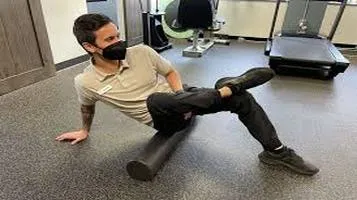Foam Roller A Comprehensive Evaluation
A foam roller is a cylindrical tool made from dense foam, commonly used in physical therapy, exercise, and massage therapy. It serves as a self-myofascial release (SMR) instrument, helping individuals relieve muscle tightness, improve flexibility, and enhance circulation. By applying body weight onto the foam roller, users can target specific muscle groups, effectively breaking up adhesions and releasing tension. Foam rollers come in various sizes and densities, catering to different levels of pressure and comfort. Athletes and fitness enthusiasts often incorporate foam rolling into their warm-up and recovery routines to prevent injuries and aid in muscle recovery. Its lightweight and portable design make it a convenient tool for both home use and on-the-go muscle maintenance.

In the world of fitness and rehabilitation, the foam roller has positioned itself as an indispensable tool. Whether you are a professional athlete, a weekend warrior, or someone dealing with chronic pain, foam rollers promise a plethora of benefits. But do they live up to the hype? After extensive use and evaluation, here's an in-depth review of this seemingly simple yet highly effective piece of equipment.
Design and Build Quality
Foam rollers come in various shapes, sizes, and materials, each designed to cater to specific needs. The most common types are high-density, low-density, and textured foam rollers. High-density foam rollers are firm and offer deeper muscle penetration, making them ideal for more intense workouts and muscle knots. Low-density rollers are softer and more forgiving, perfect for beginners or those with sensitive muscles. Textured foam rollers, often equipped with knobs or ridges, are designed to mimic the hands of a masseuse, providing a more targeted and intense massage.
The build quality of foam rollers can vary significantly between brands. The best foam rollers are made from high-quality EVA foam or polyethylene, ensuring durability and consistency in performance. Cheaper models may not offer the same longevity or effectiveness, often losing their shape and density over time. Investing in a reputable brand is advisable for long-term use and optimal results.
Functionality and Effectiveness
The primary function of a foam roller is myofascial release, a technique used to alleviate muscle tightness and soreness. By applying pressure to specific points on the body, foam rolling helps break up adhesions and scar tissue, improving blood flow and promoting faster recovery.
One of the standout features of foam rollers is their versatility. They can be used to target almost every muscle group, from the calves and hamstrings to the back and shoulders. For athletes, foam rolling before and after workouts can significantly reduce the risk of injury and enhance overall performance. For those dealing with chronic pain or stiffness, regular use can lead to improved mobility and flexibility.
Moreover, foam rollers are incredibly user-friendly. Even those new to fitness can quickly learn to use them effectively. Most foam rollers come with instructional guides or access to online tutorials, making it easy to incorporate them into daily routines.
Benefits
1. Improved Flexibility and Mobility
Regular foam rolling helps increase the range of motion in joints and muscles. This is particularly beneficial for athletes who require peak performance and for older adults looking to maintain their mobility.
2. Enhanced Muscle Recovery
Foam rolling after intense workouts can significantly reduce muscle soreness and stiffness. By promoting better blood flow and breaking down lactic acid build-up, it accelerates the recovery process, allowing for more consistent training without prolonged downtime.
3. Pain Relief
For those suffering from chronic pain, such as lower back pain or plantar fasciitis, foam rolling can provide substantial relief. By targeting trigger points, it helps in releasing muscle tension and alleviating pain.
4. Cost-Effective
Compared to regular massages or physiotherapy sessions, a foam roller is a one-time investment that offers similar benefits. It allows for self-massage at home, providing an affordable and convenient option for muscle care.
Drawbacks
While foam rollers offer numerous benefits, they are not without their limitations.
1. Initial Discomfort
Beginners might find foam rolling painful, especially if they have tight or sore muscles. The discomfort usually decreases with regular use, but it can be a deterrent for those new to the practice.
2. Risk of Incorrect Use
Using a foam roller incorrectly can lead to bruising or further muscle strain. It is crucial to follow proper techniques and guidelines to avoid potential injuries. Consulting with a fitness professional or physiotherapist can provide personalized advice and ensure correct usage.
3. Limited Scope
While foam rollers are excellent for surface-level muscle relief, they may not be as effective for deeper muscle issues or more complex injuries. In such cases, professional medical treatment may be necessary.
Conclusion
Foam rollers are a versatile, cost-effective, and highly effective tool for improving muscle health and overall physical performance. Their benefits far outweigh the minor drawbacks, making them a valuable addition to any fitness or rehabilitation regimen. However, like any tool, their effectiveness is maximized when used correctly and consistently.
For those serious about their fitness or seeking relief from chronic muscle pain, investing in a high-quality foam roller can be a game-changer. With regular use, the improvements in flexibility, mobility, and overall muscle health are both noticeable and significant.






